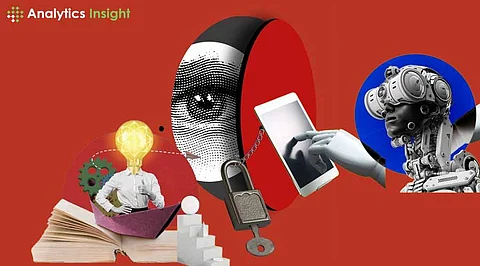

The AI Trade-Off: Security vs. Innovation
The fastest-growing technology today is artificial intelligence (AI). New AI systems are transforming various industries, improving work processes, and advancing human progress in sectors such as healthcare, finance, and transportation, among others. However, the challenges and risks associated with the potential misuse of AI technology are becoming increasingly significant and raising public concerns.
One critical area where these concerns have raised quite a few eyebrows is in the realm of AI export controls. Governments have implemented export controls to regulate the spread of AI technology across borders, aiming to strike a balance between fostering innovation and ensuring both national and global security.
AI export restrictions essentially stem from fears of the threat of sensitive technologies falling into the wrong hands. Many of the applications developed from AI, for example, particularly in defense and cybersecurity as well as surveillance, inherently have dual use, civilian and military applications. At this juncture, governments have to face the very daunting task of ensuring that AI technology does not contribute to security threats and feed the advanced weaponry of adversarial nations.
The central concern over AI export controls revolves around the misuse of the technology in hostile environments. As AI takes on increasingly diverse roles in conducting military and defense operations, ranging from autonomous weapons to cyber warfare, the specter of malicious use threatens to become very acutely a reality. More advanced AI could be used, for example, in drones or self-driving cars, to wage wars or to attack strategic national infrastructures in a cyber war. Governments prevent this through strict regulations on the export of AI-specific technologies to ensure that only reputable partners get access to sensitive tools and algorithms.
However, AI export restrictions are a challenge to innovation worldwide. AI-specific innovation happens through collaboration and knowledge sharing across borders. All of these issues might be addressed if countries and organizations collaborated to solve some of the world's biggest challenges, like climate change, health gaps, and economic differences. Strict export controls might be too much of an obstacle to international cooperation, slowing down the development of technology and preventing people from using AI solutions that help everyone.
In some cases, these limitations could hinder the emergence of new economies that require such advanced technologies to drive innovation and development for themselves.
1. Lack of geographical boundaries: AI research and development transcend national borders, relying on global collaboration and knowledge sharing.
2. Restrictions on exports: Imposing barriers on AI exports can limit access to cutting-edge technology, hindering growth and progress.
1. Unequal access to technology: Developing countries may be denied access to advanced AI tools, exacerbating the digital divide.
2. Fragmentation of the AI ecosystem: Restrictions can slow technological advancements in certain areas, hindering global progress.
1. Focus on national security: The US has implemented AI export controls to protect its interests and counter competitors like China.
2. Setting a trend: The US has taken a lead in establishing AI export controls, influencing other regions to follow suit.
1. Comprehensive regulation: The EU has emphasized the need for regulations that cover innovation, ethics, privacy, and security issues.
2. Responsible AI deployment: The EU's framework aims to ensure transparent and accountable deployment of AI technologies.
Export controls go a long way in protecting national interests; however, this needs extreme caution because harsh control is likely to retard the development of novel technologies, limit access to transformational AI applications, and even stifle cross-border cooperation. This would require governments' collaborative efforts to establish clear and integrated policies that would address other factors like security and innovation and the ones being addressed now. Thus, international cooperation would be required in order to present a framework encouraging responsible development and sharing of AI technologies while simultaneously working to minimize the risks of such misuse.
Interactions between governments, technology companies, and international organizations are going to need to be incessant so that export restrictions remain abreast with fast-changing AI. As AI technologies are continuously evolving, new challenges will come along, and hence, governments need to be ahead of emerging risks by evolving their policies. Clear communication and cooperation on a global scale will play a key role in the efficient management of the challenges.
Export controls on AI represent a precarious balancing act, one that must carefully weigh security interests against the need for innovation and international collaboration. While safeguards are essential to prevent the misuse of sensitive technologies, their implementation must be nuanced to avoid stifling progress or hindering global cooperation.
Ultimately, striking this balance is crucial, as it will enable the responsible development and deployment of AI, unlocking its vast potential to transform industries, improve lives, and drive global prosperity.
